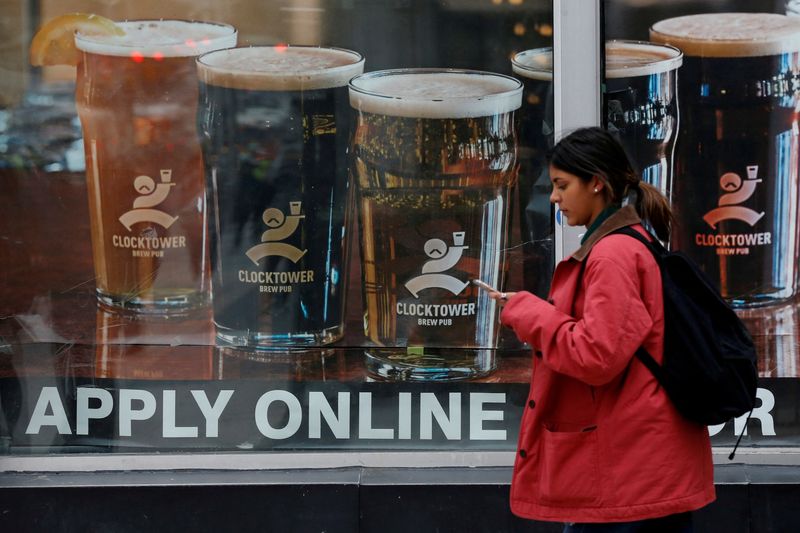By Steve Scherer and Fergal Smith
OTTAWA (Reuters) - The Canadian economy added a limited number of jobs in November and the unemployment rate came in lower than expected as fewer people looked for work, official data showed on Friday, in a tepid report that may bolster the chances for a normal-sized interest rate increase next week.
Canada added 10,100 jobs in November, broadly in line with the forecast gain of 5,000, while the jobless rate fell to 5.1%, Statistics Canada said. Analysts had forecast the jobless rate would tick up to 5.3%.
The November report follows a monster gain of 108,300 jobs in October and comes just days ahead of a Bank of Canada policy-setting meeting on Wednesday. The central bank has raised rates by 350 basis points since March, one of its steepest tightening cycles ever.
"To my mind, this is evidence of a decelerating economy," said Andrew Kelvin, chief Canada strategist at TD Securities. He said he sees a 25-basis-point hike next week but that there is an equal chance of a bigger increase.
"As a result of the only modest gain in headline employment and the absence of any signs of accelerating wage growth, we continue to expect the Bank of Canada to hike rates just 25 basis points next week," said Royce Mendes, director and head of macro strategy at Desjardins.
Doug Porter, chief economist at BMO Capital Markets, called the data "unsurprising" but said it shows that "the labor market remains tight and in solid shape overall" and expects a 50-basis-point rate increase on Wednesday.
After the report, money markets expected the Bank of Canada to raise interest rates by 25 basis points in December, with a 15% chance of a larger move. <0#BOCWATCH>
The central bank has forecast the economy would stall in the fourth quarter through mid-2023.
The Canadian dollar weakened 0.2% to 1.3455 per greenback, or 74.32 U.S. cents, with investors also weighing U.S. jobs data that could complicate the Federal Reserve's intention to start slowing the pace of tightening this month.
Average hourly wages of permanent employees increased 5.4% in November versus 5.5% the previous month, Statscan said. The small jobs gain was entirely for full-time work and mostly in the services sector, while the participation rate edged down to 64.8% from 64.9% in October.
The employment rate among core-aged women reached a new record high of 81.6% in November, Statscan said.
